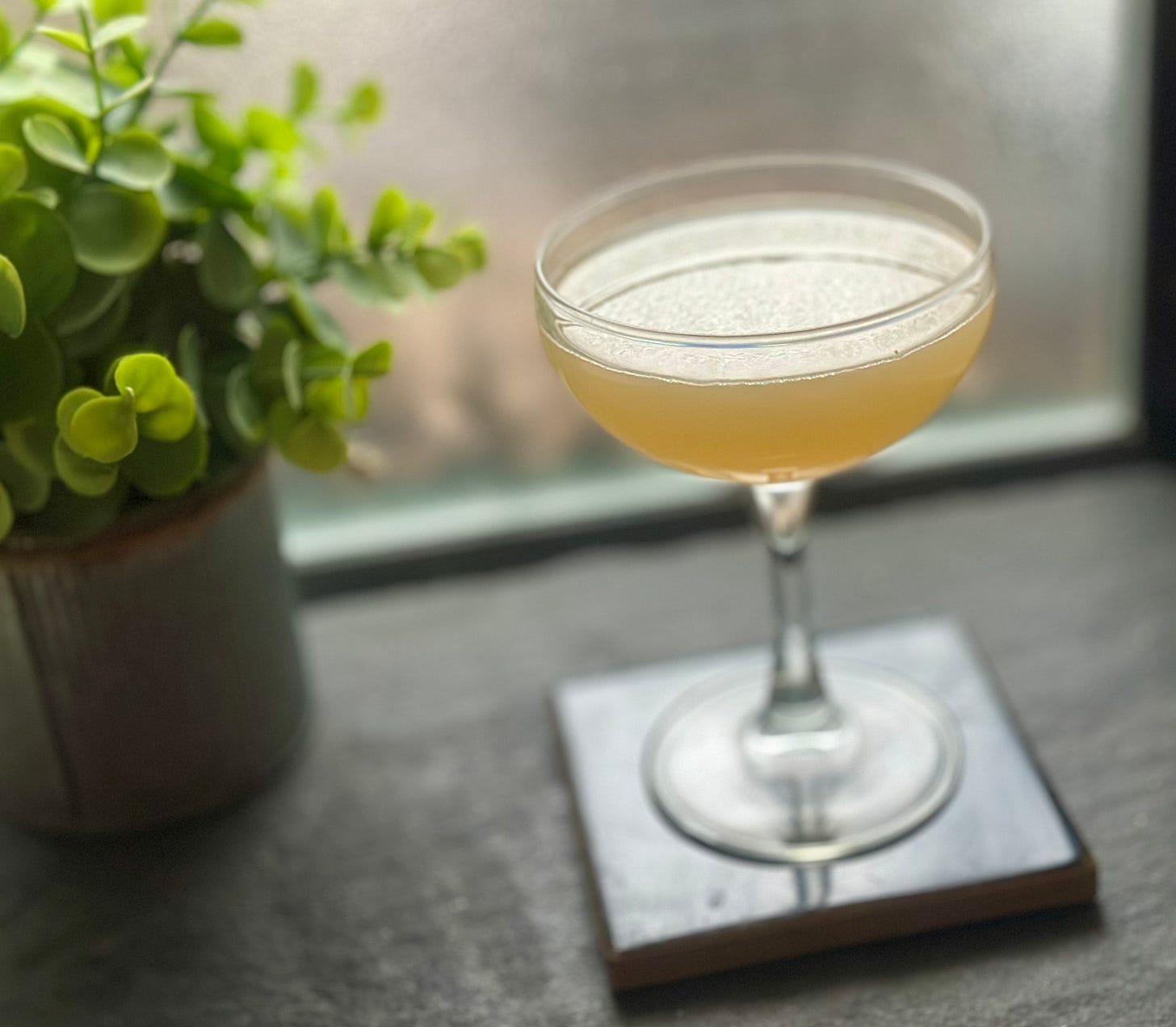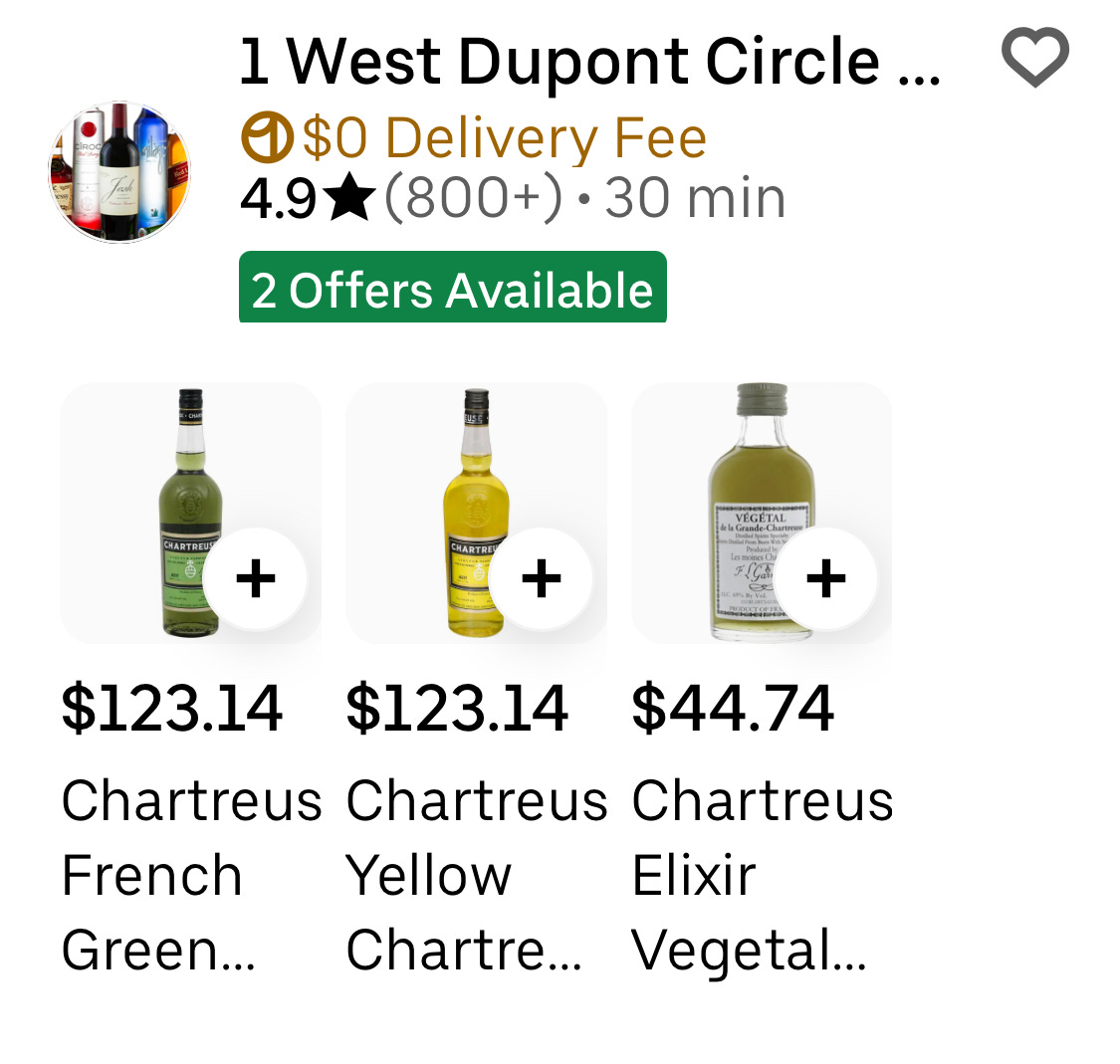Blend Your Way to a Less Expensive Chartreuse Substitute
How to deal with the Chartreuse shortage.
In last week’s newsletter, we looked at a multi-part Boulevardier that takes the three-ingredient, whiskey Negroni—or is it a Campari Manhattan?—and complicates it into a five, possibly six part drink.
The complications come through blending: Instead of whiskey, vermouth, and Campari, that version of the drink takes two different rye whiskeys, two different vermouths, and perhaps two different bittersweet liqueurs, and extracts delicate layers of flavor in the process.
You can use this technique to add complexity to other Negroni-esque drinks, as we did in the six-part Negroni I showcased at the end of the newsletter.
But you can also use it to solve other cocktail conundrums. For example: What do you do about the Chartreuse shortage?
For the last several years, Chartreuse has been in limited supply. The monks who make it decided to stop fulfilling every order so they could spend more time being monks, communing with the almighty. Fair enough.
But for cocktail enthusiasts, what that means is that there’s not enough Chartreuse to go around. Like a good man, Chartreuse can be hard to find.
And when you can find it, it’s often heavily marked up. At $60 a bottle, Chartreuse was always somewhat pricey. These days, you’re lucky to find it at $75. Just last week, I saw multiple bottles of green Chartreuse, plus a single bottle of yellow, on sale at a liquor store in my D.C. neighborhood—for $110 a bottle.
This isn’t even the most expensive price in town. There’s a liquor store near my day-job office advertising bottles of both green and yellow for $123 via delivery.1 Crazy!
For that sort of price tag, you can buy a lot of other bottles.
In fact, you can buy a trio of bottles that can be blended into a delicious, earthy, herbal-sweet Chartreuse substitute.
Yes, you’ll have to front the cost of three bottles, but on a per-drink, per-pour, per-ounce basis, it’s quite a bit cheaper.
To be clear, when I say “Chartreuse substitute,” I do not mean “a liqueur that tastes exactly like Chartreuse.” The exact formula for making Chartreuse is famously secret, known to just a few of the monks who make it. You are not going to replace it with something that is totally indistinguishable from Chartreuse.
But you can, however, replace it with something that has many of the same characteristics, works well in many of the same drinks, particularly Last Words and Last Word variations, and—to return to my cocktail casting metaphor—effectively plays the same role.
Casting in cocktails is a lot like casting in the movies. Consider Darren Aronofsky’s weirdo sci-fi romance, The Fountain. The film was originally set to star Brad Pitt and Cate Blanchett, with a budget of about $70 million. But after production collapsed, he recast the film with Hugh Jackman and Rachel Weisz, and reimagined it with a much smaller budget, closer to $30 million.
The specific merits of that film aside—I mostly like it, but it was a box office dud and it’s definitely not for everyone—sometimes that’s what you have to do with cocktails too: When your star ingredient is no longer available, or no longer available at a price you can reasonably afford, you have to recast that ingredient using less expensive, more available options.
As it turns out, this is something you can do with Chartreuse. And one way to do so is by making a custom blend of herbal-sweet liqueurs—a Not Chartreuse that serves as a boozy Hugh Jackman to Chartreuse’s Brad Pitt. (In fact, this is exactly what I did this weekend when I had some friends over for drinks. Parties are good! I recommend them.)
To do this, you’ll need at least two, and ideally three, of the following four bottles:


